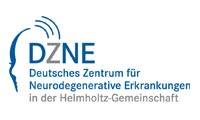On the brain’s ability to find the right direction

Scientists from Germany and abroad will be meeting in Magdeburg from 27 to 29 November 2018 to discuss latest research on spatial cognition in aging and neurodegeneration. The symposium is hosted by the German Center for Neurodegenerative Diseases (DZNE).
“This unique interdisciplinary conference will gather leading experts from different disciplines from Europe and overseas. We are expecting about 70 participants,” says Prof. Thomas Wolbers, a senior scientist at the DZNE and one of the symposium’s organizers.
The program covers a wide spectrum of research on spatial orientation and navigation. This includes e. g. studies based on human brain imaging, online-gaming as well as virtual reality.
“Elderly people often have difficulties finding their way around in new environments, which can impair their mobility, their autonomy and thus their general quality of life,” says Wolbers.
“In view of an aging population, it is important to understand the mechanisms governing spatial cognition and how these mechanisms are affected by aging and diseases like Alzheimer’s. This may help to devise strategies for a self-determined life in advanced age and support the development of novel tools to diagnose dementia.”
https://www.dzne.de/en/news/public-relations/press-releases/press/detail/on-the-… This release
https://www.dzne.de/iscan18 DZNE Interdisciplinary Symposium on Spatial Cognition in Aging and Neurodegeneration (iSCAN)
Media Contact
More Information:
http://www.dzne.deAll latest news from the category: Event News
Newest articles

Superradiant atoms could push the boundaries of how precisely time can be measured
Superradiant atoms can help us measure time more precisely than ever. In a new study, researchers from the University of Copenhagen present a new method for measuring the time interval,…

Ion thermoelectric conversion devices for near room temperature
The electrode sheet of the thermoelectric device consists of ionic hydrogel, which is sandwiched between the electrodes to form, and the Prussian blue on the electrode undergoes a redox reaction…

Zap Energy achieves 37-million-degree temperatures in a compact device
New publication reports record electron temperatures for a small-scale, sheared-flow-stabilized Z-pinch fusion device. In the nine decades since humans first produced fusion reactions, only a few fusion technologies have demonstrated…





















